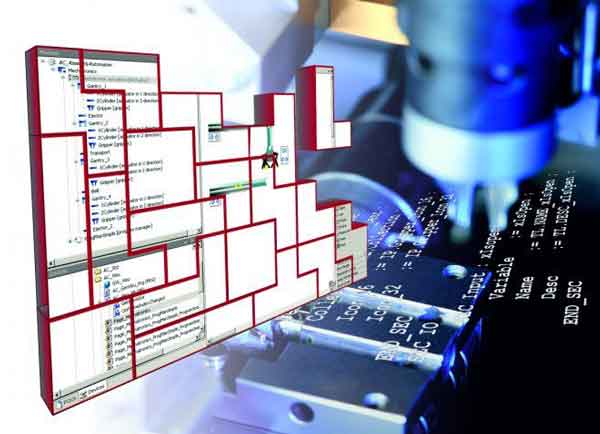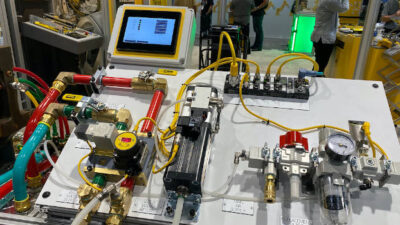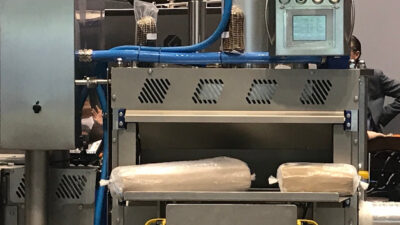For discrete control and manufacturing, the trend toward using programmable logic controllers (PLCs) controls is increasing as specialized control systems are abandoning proprietary based controllers in favor of more open, readily available, and sustainable hardware platforms.

It goes without saying that PLCs are the basis of most discrete control and manufacturing today. The trend toward using PLC controls is increasing as even specialized control systems are abandoning their proprietary based controllers in favor of more open, readily available, and sustainable hardware platforms.
Traditionally, custom controllers were mainly used either to protect the OEM’s or machine builder’s proprietary processes, or to reduce the controller cost (as compared to using a PLC with more features and functions than were needed). But today, processes can be protected by programming special function blocks, using tiers of security passwords, and/or limiting the source code download in a PLC program. In terms of cost, the proliferation of small and powerful PLCs on the market today means lower costs and higher reliability when compared to custom controllers.
Consequently, PLCs are adopting different form factors to suit the myriad of application requirements. The large footprint of fixed-rack PLCs is giving way to more modular systems with integrated serial bus designs; this allows just the right amount of I/O expansion modules to be added to the main PLC central processing unit (CPU). These PLC configurations provide the most flexibility while minimizing the overall space requirements. Size and features vary by manufacturer, but the old paradigm of bigger is better no longer applies.
The functionality that prompted the purchase of large PLCs in the past is now commonly available in small PLCs. As the large PLCs of the 1980s were replaced by mid-sized PLCs in the 1990s, the mid-size PLCs are being upgraded with smaller controllers that are faster, incorporate advanced features, and are more cost effective.
Small PLCs can pack a lot of processing horsepower and have advanced PLC feature sets as well. When advanced PLC features like hot swappable modules or fail-safe CPUs are not required, small modular PLCs can reduce hardware costs as well as annual software license and technical support expenses. With self-contained power supplies and I/O in one conveniently mounted package, brick-style PLCs are still a popular choice. They are available in fixed I/O models as well as modular and expandable versions with essential features such as removable terminal strips and multiple communication ports. More recently, PLC functionality is being combined with other peripheral hardware, such as hardened operator interface panels; the combination reduces the overall hardware costs and simplifies programming with an integrated programming tool set. Standard distributed I/O can be connected using a range of industrial control networks. In some instances, these HMI/PLC units can incorporate a time-saving bus network that connects common control components such as motor starters and pilot devices directly to the unit—eliminating traditional I/O modules and the associated wiring expense.
Open programming software
Equally important to the suitability of the hardware configurations is the programming software that is needed. The standardization of the five programming languages per IEC 61131-3 has led to the development of a common programming standard and execution code for PLC systems that is no longer dependent on the brand or manufacturer of the PLC hardware. It is promoting interoperability and saving engineers time when working with solutions from multiple vendors.
The emergence and growing adoption of the Controller Development System (CoDeSys) is helping users to minimize programming time and maximize available skill sets. Investing in this programming environment yields a knowledge base and competency level that is portable to different projects and different manufacturers’ hardware.
Layers of security features and the flexibility of being able to use a mix of IEC 61131-3 programming languages—based on what is most efficient or familiar—are a couple of the key benefits of using CoDeSys. OEMs that need a lot of flexibility and use various hardware platforms or configurations are best served using CoDeSys compliant hardware and programming tools. Instead of investing resources in learning proprietary programming software, OEMs are adopting more open programming environments that they can leverage across the scope of their projects.
As PLCs are increasingly relied upon for discrete control applications, innovation and standardization across PLC systems is creating a climate where hardware platforms are more open, flexible, and interoperable to save OEMs time and costs. Furthermore, increased assimilation of technologies enables lower costs, faster programming, and simplified integration for OEMs, allowing them to eliminate the traditional PLC hardware altogether by embedding the PLC in the HMI. PLCs have come a long way over the years and continue to make advancements that increase control in a multitude of applications.
– Richard Chung is product manager at Eaton. Edited by Mark T. Hoske, CFE Media, Control Engineering, www.controleng.com.
www.eaton.com
www.3s-software.com CoDeSys by Smart Software Solutions
www.controleng.com/new-products/PLCs-and-PACs.html
For more, see the January North American print and digital edition cover story on control programming and related Online Extras. (All will be posted by Jan. 23.)



